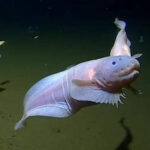I got a phone call last week from NOAA Public Affairs Specialist Christine Patrick, who helpfully clarified a lot of details from my last post about seafood safety testing in the Gulf. Some of her main points were as follows:
- All Gulf seafood samples have been screened by “expert sensory testers”, even though the NOAA protocol allow for initial screening by less experienced testers (this apparently only happens when there is a very high volume of samples)
- ALL sensory samples are also tested via chemical analyses
- Every piece of fish is tested by 7 different sensory experts, who both smell and taste the fish (both raw and cooked)–so each sample is examined a total of 21 times.
- One shrimp sample actually means ONE GALLON of shrimp; these are tested in batches though, not one by one. You’d think they’d make this sample size very clear on the website, since shrimp are one of the foods people are most worried about.
Her e-mail had an easily digested summary of the process:
The seafood safety testing program has involved NOAA, the FDA and the Gulf states. All agreed that closing oiled or potentially oiled water to fishing would be the best way to prevent tainted fish from reaching the marketplace. The first federal closure occurred on May 2. Early on, NOAA, the FDA and the Gulf states began working on what is known as the “Reopening Protocol”, which lays out what needs to happen before those closed waters that experienced oil could be reopened. The protocol describes both the methodology to be followed and the results required. In sum, the protocol specified that to reopen waters, waters must be free from oil, and every seafood sample taken from that area must pass both a sensory and a chemical test. It’s linked below.
There are four phases of sampling and testing: (1) baseline (2) boundary-surveillance (3) reopening and (4) post-opening. NOAA began baseline sampling on April 29, to analyze seafood and areas before oil reached there. That helped us know what the seafood looked like before they were exposed to oil and dispersant. After NOAA first closed a portion of the federal waters of the Gulf to fishing on May 2, we began boundary-surveillance sampling, to make sure the closure boundary was sufficient — that any tainted fish was inside the closure. The reopening phase of sampling began in July, and the first reopening was July 22. Now, NOAA is finishing its post-opening sampling, which is to support consumer confidence that fish in the open areas of the Gulf continue to test clean. Currently, 99.6% of the federal waters of the Gulf are open to fishing. The only part that remains closed is about 1,000 square miles right around the wellhead.
NOAA has jurisdiction for federal waters (from 3 miles offshore out to 200 miles offshore) and states have jurisdiction for their state waters (out to three miles). The FDA is involved since this relates to food, and they are the food safety agency. NOAA, the Gulf states, and the FDA worked on and agreed to the Reopening Protocol, which means they are following the same process to test fish and open waters.
Much of the seafood testing has occurred at NOAA’s Pascagoula, MS laboratory. First off, all Gulf samples, state or federal, go to the National Seafood Inspection Laboratory (NSIL) (within the Pascagoula facility), where they’re processed (in other words, tissue samples are taken from the fish and prepared for analysis). Then, all samples go to the expert sensory panel (made up of NOAA and FDA employees) in Pascagoula. The chemical testing for federal samples (those samples taken from federal waters) is done in Seattle at a NOAA lab, while state samples chemical analysis is done by FDA labs elsewhere (the states and FDA would know where).
NOAA can talk about results from federal waters — and all these results are publicly available online (linked below). States can talk about the results from state waters. The FDA could talk about either, if needed (they review all the results before giving NOAA or the states the green light to open waters). State websites are linked from the FDA’s seafood safety one-stop-shop website, linked above.
She also sent some pictures of the testing process, which I haven’t seen anywhere on the website (Credit to NOAA for all of these photos):
My lingering discontent with all of this seafood testing is how inaccessible the information is to the general public. While I appreciate being phoned up directly by a NOAA publicist, I realize this has only happened because a) I am a scientist and thus have some street cred b)I have been wading knee-deep in all of NOAA’s public information to produce this blogging series. Christine’s e-mail emphasized that all this information is freely available online, and she sent me a list of links. This list contained THIRTEEN different websites all with different pieces of information. Firstly, the general public does not have the patience to wade through all those different websites. When I was doing the initial batch of research a few weeks ago, I spent FIVE HOURS trying to pull out information, and in the end I just got increasingly frustrated because I had to read through so much technical information to pull out key pieces of information (like the formula for calculating the threshold safe level of PAHs used in the Gulf testing–that was buried in article 588, section VIIMCMXV, subsection viiiiii of some NOAA protocol). Secondly, even if there is a gung-ho non-scientist that is determined to find out how many shrimp samples were tested over what area in the Gulf, he/she will probably not have enough expertise to digest all the technical data posted on these websites–so they will just give up and by default (perhaps fueled by media covered) assume they are being poisoned by seafood.
The message we keep getting from NOAA is “everything is safe, don’t worry, trust us”. What I would really like to see is “Everything is safe–here is the data in an easily accessible format so you can see for yourself”. Why can’t NOAA produce a simplified website with key information in obvious places–like a seafood consumption calculator, so you could compare the amount of Gulf seafood you eat (taking into account your age, gender, etc) with the recommended safe level for you as an individual. Instead of just posting written memos about seafood testing, how about a graphical description of type and amount (number of individuals, total weight of flesh) of each species tested. I love blogging and digesting this information for the public, but I do it because there is a need for it. I do it pro bono, in my free time between juggling classes, labwork, conferences, and meetings. It is, however, someone’s job at NOAA to communicate with the public






Thanks for staying on top of this. it’s not surprising a government agency isn’t synthesizing information appropriately for the public. In fact, I expect it, but it’s not unreasonable to demand it from them either. Good on you for your lingering discontent. Word to NOAA… People don’t trust the government!
gulf sea ‘food’ test results thus far: http://peacelovezen.tumblr.com/post/2632491024/results-of-sampling-from-jan-3rd-this-includes-gulf !!
Where did you find that a sample size is one gallon? I don’t believe this is true …